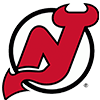It's fashionable to pan ADP (average draft position). Sure, it has its flaws. However, categorically dismissing its utility is a mistake. When incorporated properly, ADP can be a useful tool.
RELATIVE, NOT ABSOLUTE
The primary shortcoming of ADP is lack of uniformity across all leagues. While this is obviously an issue, so long as the scoring system for your league is similar to the ADP, players can be viewed in terms of relative market rank. The best example is 5x5 leagues, since there isn't a universal scoring system for points leagues. The actual ADP doesn't matter. What's relevant is the relative ranking of players at the same position or who provide similar categorical contributions.
LEAGUE SPECIFIC ADP
Not slighting other sources, but currently the NFBC (National Fantasy Baseball Championship) ADP is the industry standard. Once drafting season begins in earnest, all the major sites (ESPN, Yahoo, CBS) will compile their own. Until then, the NFBC ADP will be prominently discussed.
Feeding into the "relative, not absolute" mantra, many unfairly judge the NFBC ADP. NFBC Draft Champions leagues comprise the current ADP. These are 15-team, draft-and-hold leagues with 50 roster spots. There's an individual league component along with everyone lumped together to crown an overall champion. Any time there's an overall element, non-conventional strategies will be deployed, skewing ADP.
Even more important is the NFBC has its own economy, with a myriad of monkey-see, monkey-do strategies. Drafting at least one, if not two aces is the chief ploy rendering the NFBC
It's fashionable to pan ADP (average draft position). Sure, it has its flaws. However, categorically dismissing its utility is a mistake. When incorporated properly, ADP can be a useful tool.
RELATIVE, NOT ABSOLUTE
The primary shortcoming of ADP is lack of uniformity across all leagues. While this is obviously an issue, so long as the scoring system for your league is similar to the ADP, players can be viewed in terms of relative market rank. The best example is 5x5 leagues, since there isn't a universal scoring system for points leagues. The actual ADP doesn't matter. What's relevant is the relative ranking of players at the same position or who provide similar categorical contributions.
LEAGUE SPECIFIC ADP
Not slighting other sources, but currently the NFBC (National Fantasy Baseball Championship) ADP is the industry standard. Once drafting season begins in earnest, all the major sites (ESPN, Yahoo, CBS) will compile their own. Until then, the NFBC ADP will be prominently discussed.
Feeding into the "relative, not absolute" mantra, many unfairly judge the NFBC ADP. NFBC Draft Champions leagues comprise the current ADP. These are 15-team, draft-and-hold leagues with 50 roster spots. There's an individual league component along with everyone lumped together to crown an overall champion. Any time there's an overall element, non-conventional strategies will be deployed, skewing ADP.
Even more important is the NFBC has its own economy, with a myriad of monkey-see, monkey-do strategies. Drafting at least one, if not two aces is the chief ploy rendering the NFBC ADP unique. The Internet is replete with columns chastising 'taking pitching so early.' Granted, I don't always force stud arms onto my roster, but I understand the nature of the ADP and am aware the absolute rank doesn't transcend all formats. My commentary is usually geared towards the relative rank of five pitchers in a tier, not "they possess third and fourth round ADPs while my rankings have them lower". Be wary of those comparing their overall rank to the NFBC ADP.
Another area setting the NFBC apart is their adoration for the shiny now toy, along with recency bias. This may take me off the holiday card list of some of my NFBC brethren, but not all willing to pay to get in are among the "best of the best", a phrase often used to describe NFBC competition. High-stakes leagues use the same player pool as common folk, with the drafters subject to the same biases. The overall component lends itself to the "play big or go home" mentality, pushing hot prospects up the board. Luis Robert may be too risky in your home league. Meanwhile, some NFBC drafters see him as the Holy Grail. Like with pitching, consider the context when someone pans the early ADP of an inexperienced player.
WOULDN'T HAVE MADE IT BACK TO ME
To be honest, this is more an indictment of the general notion than of ADP. Taking a player mainly because "he wouldn't have made it back to me" is a misapplication of ADP. There are three questions to consider when you're on the clock.
- Is the player worthy of this spot?
- What are the chances he makes it back to me?
- Is there someone else to consider instead, especially if there's a good chance the first guy will make it back to me?
Drafting a player ahead of the market is only prudent if he helps relative to the draft spot. Jumping the ADP is fine, but not if the result is a likely negative return on investment. Further, if the return is positive, it's still a poor choice if there was someone offering a chance for more profit.
There are a couple of ways to gauge if a player is worthy of a spot. The first is simply comparing to your rankings, keeping in mind they're fluid and adaptive to the flow of the draft. If you're up with the 38th pick, anyone ranked ahead of the 39th player on your cheat sheet is fair game. An ADP after 38 invokes the second question above, will he be there at my next turn? The answer isn't always cut and dried. Sometimes you'll guess "yes" and be sniped. That's fine. You filled the spot with someone just as worthy while someone else "overpaid" for that player.
The second manner to judge the equity of a pick is more apropos if you're deciding on the order of selection of a set of players. Plus, it gives me a reason to post some tables that were labor-intensive to generate. What follows are data from some of the more common leagues, showing the average earned per draft spot from 2017-2019. That is, final stats were used to determine season-long earnings. The top amount for the three seasons was averaged, followed by the second most, etc. This number serves as an example proxy for expectation at each spot.
15-Team Mixed
| TM 1 | TM 2 | TM 3 | TM 4 | TM 5 | TM 6 | TM 7 | TM 8 | TM 9 | TM 10 | TM 11 | TM 12 | TM 13 | TM 14 | TM 15 | |
| Rd 1 | 47 | 46 | 44 | 41 | 41 | 39 | 38 | 37 | 36 | 35 | 35 | 34 | 33 | 33 | 33 |
| Rd 2 | 26 | 26 | 27 | 27 | 27 | 28 | 28 | 29 | 29 | 29 | 30 | 30 | 30 | 31 | 31 |
| Rd 3 | 26 | 25 | 25 | 25 | 24 | 24 | 24 | 24 | 24 | 24 | 24 | 23 | 23 | 23 | 23 |
| Rd 4 | 20 | 20 | 20 | 20 | 21 | 21 | 21 | 21 | 21 | 22 | 22 | 23 | 23 | 23 | 23 |
| Rd 5 | 20 | 20 | 20 | 19 | 19 | 19 | 19 | 19 | 19 | 18 | 18 | 18 | 18 | 18 | 18 |
| Rd 6 | 16 | 16 | 16 | 16 | 16 | 17 | 17 | 17 | 17 | 17 | 17 | 17 | 17 | 17 | 17 |
| Rd 7 | 16 | 16 | 15 | 15 | 15 | 15 | 15 | 15 | 15 | 14 | 14 | 14 | 14 | 14 | 14 |
| Rd 8 | 13 | 13 | 13 | 13 | 13 | 13 | 13 | 13 | 13 | 13 | 14 | 14 | 14 | 14 | 14 |
| Rd 9 | 13 | 12 | 12 | 12 | 12 | 12 | 12 | 12 | 12 | 12 | 11 | 11 | 11 | 11 | 11 |
| Rd 10 | 10 | 10 | 10 | 10 | 10 | 10 | 10 | 10 | 11 | 11 | 11 | 11 | 11 | 11 | 11 |
| Rd 11 | 10 | 10 | 10 | 10 | 10 | 10 | 10 | 10 | 10 | 10 | 9 | 9 | 9 | 9 | 9 |
| Rd 12 | 8 | 8 | 8 | 8 | 8 | 8 | 8 | 9 | 9 | 9 | 9 | 9 | 9 | 9 | 9 |
| Rd 13 | 8 | 8 | 8 | 8 | 8 | 8 | 8 | 8 | 8 | 8 | 7 | 7 | 7 | 7 | 7 |
| Rd 14 | 6 | 6 | 7 | 7 | 7 | 7 | 7 | 7 | 7 | 7 | 7 | 7 | 7 | 7 | 7 |
| Rd 15 | 6 | 6 | 6 | 6 | 6 | 6 | 6 | 6 | 6 | 6 | 6 | 6 | 6 | 6 | 6 |
| Rd 16 | 5 | 5 | 5 | 5 | 5 | 5 | 5 | 5 | 5 | 5 | 5 | 5 | 5 | 6 | 6 |
| Rd 17 | 5 | 5 | 5 | 5 | 5 | 5 | 5 | 5 | 5 | 4 | 4 | 4 | 4 | 4 | 4 |
| Rd 18 | 4 | 4 | 4 | 4 | 4 | 4 | 4 | 4 | 4 | 4 | 4 | 4 | 4 | 4 | 4 |
| Rd 19 | 4 | 4 | 3 | 3 | 3 | 3 | 3 | 3 | 3 | 3 | 3 | 3 | 3 | 3 | 3 |
| Rd 20 | 2 | 2 | 2 | 2 | 2 | 2 | 3 | 3 | 3 | 3 | 3 | 3 | 3 | 3 | 3 |
| Rd 21 | 2 | 2 | 2 | 2 | 2 | 2 | 2 | 2 | 2 | 2 | 2 | 2 | 2 | 2 | 2 |
| Rd 22 | 1 | 1 | 1 | 1 | 1 | 1 | 1 | 1 | 1 | 1 | 1 | 2 | 2 | 2 | 2 |
| Rd 23 | 1 | 1 | 1 | 1 | 1 | 1 | 1 | 1 | 1 | 1 | 1 | 1 | 1 | 1 | 1 |
12-Team Mixed
| TM 1 | TM 2 | TM 3 | TM 4 | TM 5 | TM 6 | TM 7 | TM 8 | TM 9 | TM 10 | TM 11 | TM 12 | |
| Rd 1 | 48 | 45 | 44 | 41 | 40 | 39 | 37 | 36 | 35 | 35 | 34 | 33 |
| Rd 2 | 27 | 27 | 28 | 28 | 28 | 29 | 29 | 30 | 30 | 31 | 32 | 33 |
| Rd 3 | 26 | 26 | 26 | 26 | 26 | 25 | 25 | 24 | 23 | 23 | 23 | 23 |
| Rd 4 | 20 | 21 | 21 | 21 | 21 | 21 | 22 | 22 | 22 | 22 | 23 | 23 |
| Rd 5 | 20 | 20 | 19 | 19 | 19 | 19 | 18 | 18 | 18 | 18 | 18 | 18 |
| Rd 6 | 16 | 16 | 16 | 16 | 17 | 17 | 17 | 17 | 17 | 17 | 17 | 18 |
| Rd 7 | 16 | 15 | 15 | 15 | 15 | 15 | 15 | 15 | 15 | 15 | 14 | 14 |
| Rd 8 | 13 | 13 | 13 | 13 | 13 | 13 | 13 | 14 | 14 | 14 | 14 | 14 |
| Rd 9 | 13 | 12 | 12 | 12 | 12 | 12 | 12 | 12 | 12 | 11 | 11 | 11 |
| Rd 10 | 10 | 10 | 11 | 11 | 11 | 11 | 11 | 11 | 11 | 11 | 11 | 11 |
| Rd 11 | 10 | 10 | 10 | 10 | 10 | 10 | 10 | 10 | 9 | 9 | 9 | 9 |
| Rd 12 | 8 | 8 | 8 | 8 | 8 | 9 | 9 | 9 | 9 | 9 | 9 | 9 |
| Rd 13 | 8 | 8 | 8 | 8 | 8 | 7 | 7 | 7 | 7 | 7 | 7 | 7 |
| Rd 14 | 6 | 6 | 6 | 6 | 6 | 7 | 7 | 7 | 7 | 7 | 7 | 7 |
| Rd 15 | 6 | 6 | 6 | 6 | 6 | 6 | 6 | 6 | 5 | 5 | 5 | 5 |
| Rd 16 | 5 | 5 | 5 | 5 | 5 | 5 | 5 | 5 | 5 | 5 | 5 | 5 |
| Rd 17 | 5 | 4 | 4 | 4 | 4 | 4 | 4 | 4 | 4 | 4 | 4 | 4 |
| Rd 18 | 3 | 3 | 3 | 3 | 3 | 4 | 4 | 4 | 4 | 4 | 4 | 4 |
| Rd 19 | 3 | 3 | 3 | 3 | 3 | 3 | 3 | 3 | 3 | 3 | 3 | 3 |
| Rd 20 | 2 | 2 | 2 | 2 | 2 | 2 | 2 | 2 | 2 | 2 | 2 | 2 |
| Rd 21 | 2 | 2 | 2 | 2 | 2 | 2 | 2 | 2 | 1 | 1 | 1 | 1 |
| Rd 22 | 1 | 1 | 1 | 1 | 1 | 1 | 1 | 1 | 1 | 1 | 1 | 1 |
| Rd 23 | 1 | 1 | 1 | 1 | 1 | 1 | 1 | 1 | 1 | 1 | 1 | 1 |
12-Team AL/NL-only
| TM 1 | TM 2 | TM 3 | TM 4 | TM 5 | TM 6 | TM 7 | TM 8 | TM 9 | TM 10 | TM 11 | TM 12 | |
| Rd 1 | 47 | 44 | 41 | 38 | 37 | 36 | 34 | 33 | 32 | 32 | 32 | 31 |
| Rd 2 | 26 | 26 | 26 | 26 | 27 | 27 | 28 | 28 | 29 | 29 | 30 | 30 |
| Rd 3 | 25 | 25 | 25 | 25 | 24 | 24 | 24 | 23 | 23 | 23 | 23 | 22 |
| Rd 4 | 20 | 20 | 20 | 20 | 20 | 21 | 21 | 21 | 21 | 22 | 22 | 22 |
| Rd 5 | 20 | 19 | 19 | 19 | 19 | 19 | 19 | 18 | 18 | 18 | 18 | 18 |
| Rd 6 | 16 | 16 | 16 | 16 | 16 | 17 | 17 | 17 | 17 | 17 | 17 | 18 |
| Rd 7 | 16 | 16 | 16 | 15 | 15 | 15 | 15 | 15 | 15 | 15 | 15 | 14 |
| Rd 8 | 13 | 13 | 13 | 13 | 13 | 14 | 14 | 14 | 14 | 14 | 14 | 14 |
| Rd 9 | 13 | 13 | 13 | 13 | 12 | 12 | 12 | 12 | 12 | 12 | 12 | 12 |
| Rd 10 | 11 | 11 | 11 | 11 | 11 | 11 | 11 | 11 | 11 | 12 | 12 | 12 |
| Rd 11 | 11 | 11 | 11 | 10 | 10 | 10 | 10 | 10 | 10 | 10 | 10 | 10 |
| Rd 12 | 9 | 9 | 9 | 9 | 9 | 9 | 9 | 9 | 9 | 9 | 9 | 9 |
| Rd 13 | 9 | 9 | 8 | 8 | 8 | 8 | 8 | 8 | 8 | 8 | 8 | 8 |
| Rd 14 | 7 | 7 | 7 | 7 | 7 | 7 | 7 | 7 | 7 | 7 | 7 | 8 |
| Rd 15 | 7 | 7 | 7 | 6 | 6 | 6 | 6 | 6 | 6 | 6 | 6 | 6 |
| Rd 16 | 5 | 5 | 5 | 5 | 5 | 5 | 5 | 5 | 6 | 6 | 6 | 6 |
| Rd 17 | 5 | 5 | 5 | 5 | 5 | 5 | 5 | 4 | 4 | 4 | 4 | 4 |
| Rd 18 | 3 | 3 | 3 | 4 | 4 | 4 | 4 | 4 | 4 | 4 | 4 | 4 |
| Rd 19 | 3 | 3 | 3 | 3 | 3 | 3 | 3 | 3 | 3 | 3 | 3 | 3 |
| Rd 20 | 2 | 2 | 2 | 2 | 2 | 2 | 2 | 3 | 3 | 3 | 3 | 3 |
| Rd 21 | 2 | 2 | 2 | 2 | 2 | 2 | 2 | 2 | 2 | 2 | 2 | 2 |
| Rd 22 | 1 | 1 | 1 | 1 | 1 | 1 | 1 | 1 | 1 | 1 | 1 | 1 |
| Rd 23 | 1 | 1 | 1 | 1 | 1 | 1 | 1 | 1 | 1 | 1 | 1 | 1 |
Given that valuation is flawed and it's myopic to view things in terms of a static number, adding up the expected earnings of a few of your consecutive draft spots and using ADP to optimize those picks in terms of projected earnings is a salient use of the tool. At the root, it's no different than doing the same with rankings as suggested earlier, but sometimes the perspective of dollar amounts helps facilitate the decision.
THE POWER OF CROWD SOURCING
ADP is an example of crowd sourcing. While not universal, crowd sourcing often yields better results than the individual components. Yet, one of the main points stressed earlier was to ignore the ADP and decide based on your rankings. This may seem contradictory.
Perhaps my favorite use of ADP is as a litmus test for my rankings (focusing more on relative than absolute). Outliers can be identified and investigated. Sometimes the additional digging unearths something I missed and an adjustment is made. Other times, my conviction is strengthened. These instances are noted and if possible, woven into my draft plan. That said, nobody gets drafted just because, "he won't make it back to me."
SUMMARY
- When used wisely, ADP can be an effective tool.
- Disregard analysis focusing on absolute ranking. Consider evaluations discussing relative rankings.
- Use ADP to optimize potential production, not to make sure you get "your guys".
- Compare your cheat sheet to ADP of a similar format and research the players with the biggest delta, focusing on relative rankings between positions or categorical contributions.























